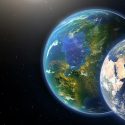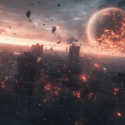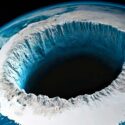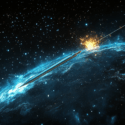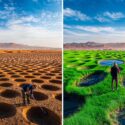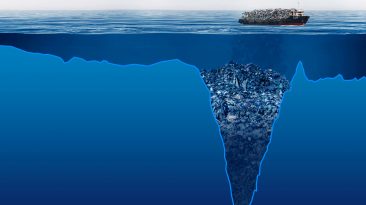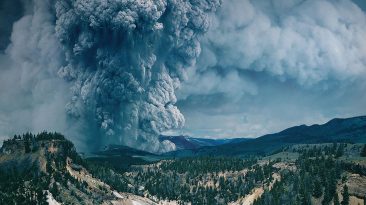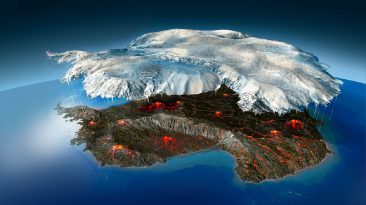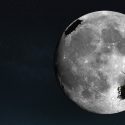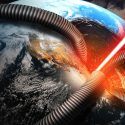There’s a deadly 40,000 km (29,400 mi)-long zone that passes through 15 countries. This area is dotted with volcanoes, giving it the name The Ring of Fire. And we’ve decided that right now, all 452 volcanoes are going to erupt at the same time.
Talk about an explosive event! What would be the most dangerous part? Could it change the climate? Would there be any warning before it happened?
The Ring of Fire is a horseshoe-shaped area that stretches around the edge of the Pacific Ocean. Its volcanoes formed when continental plates slid on top of oceanic plates, forcing the oceanic plates into the mantle below.
This tectonic movement is called subduction, and it doesn’t just create volcanoes. It also causes massive earthquakes. Around 90% of Earth’s earthquakes happen along the Ring of Fire. So if all these volcanoes erupted at once, we wouldn’t just be talking about lava flowing. We’d be witnessing massive earthquakes, toxic gas, and tsunamis.
But why would the Ring of Fire erupt? You can thank tectonic plates for causing volcanic eruptions and devastating earthquakes. These plates create the Earth’s crust and mantle, and they’re constantly moving. As they move, they collide and rub against each other, eventually breaking and releasing seismic waves.
And when one tectonic plate gets pushed below another, it creates molten rock called magma. Magma is lighter than rock, so it rises to the surface, trapping gas on its way. When magma is thick, these gas bubbles can’t escape easily, so pressure builds. When the pressure builds enough, it causes an explosive volcanic eruption.
And the volcanoes in the Ring of Fire are deadly. In 1814, Mount Mayon erupted and killed more than 1,200 people in the Philippines. And when Mount Kadovar erupted in 2018, the entire population of Papua New Guinea evacuated.
For all 452 volcanoes to erupt at once, we’d need a pretty large tectonic event. Like the forming of a new supercontinent. Ever since Pangea broke up, the Atlantic has been widening, and forcing the Pacific Ocean to narrow. Eventually, some of these continental pieces could collide, creating a seismic catastrophe. What would happen?
Well, if you lived anywhere in the Ring of Fire, your local volcano would explode and spew lava. Deadly earthquakes would happen next, which would trigger tsunamis all along the Pacific Ocean coastline.
But these spectacular events aren’t even the most lethal part. The two biggest hazards from any volcanic cataclysm are ash and volcanic gases. And they would affect the whole world.
The 452 simultaneous eruptions would launch a lot of ash into the air. The ash would cover the world, completely blocking sunlight. In 1991, when Mount Pinatubo erupted, it cooled parts of the world by up to 0.4 °C (0.7 °F) for two years. And the thick layer of ash wouldn’t just cause temperatures to drop. It would also cause massive crop failures, leading to a global food shortage.
And, as if things couldn’t get any worse, the toxic volcanic gases would create acid rain. The rain would make the oceans even more acidic, killing off coral reefs. Marine life would suffer an extinction event.
The worst part is that we can’t predict volcanic eruptions. There would be no warnings. Cities would be destroyed, and many people would die. Luckily, it’s extremely unlikely that this would happen. But there will always be activity in the Ring of Fire.
And there’s another challenge. While the rate of eruptions isn’t increasing, the damage they cause is. The more we settle and build in the shadow of active volcanoes, the more life and property will be lost when they explode. And it’s not just the active volcanoes we have to worry about. Dormant volcanoes sometimes wake up too.
Sources
- “The Big Question: Why do volcanoes erupt?” 2021. bbc.co.uk.
- “Why Do Earthquakes Happen?”. Endsley, Kevin. 2021. geo.mtu.edu.
- “Ring of Fire: The most dangerous volcanoes in the Ring of Fire REVEALED by volcanologist”. Kettley, Sebastian. 2019. express.co.uk.
- “What is the Ring of Fire?”. Emiko Jozuka, CNN. 2021. CNN.
- “The Pacific Ring of Fire, home to 452 volcanoes” 2021. 4.files.edl.io.
- “Ring of Fire’s volcanic and quake activity is normal, say scientists”. 2018. BBC News.
- “Which was the costliest volcanic eruption in history?”. Keith, Breene. 2021. World Economic Forum.



